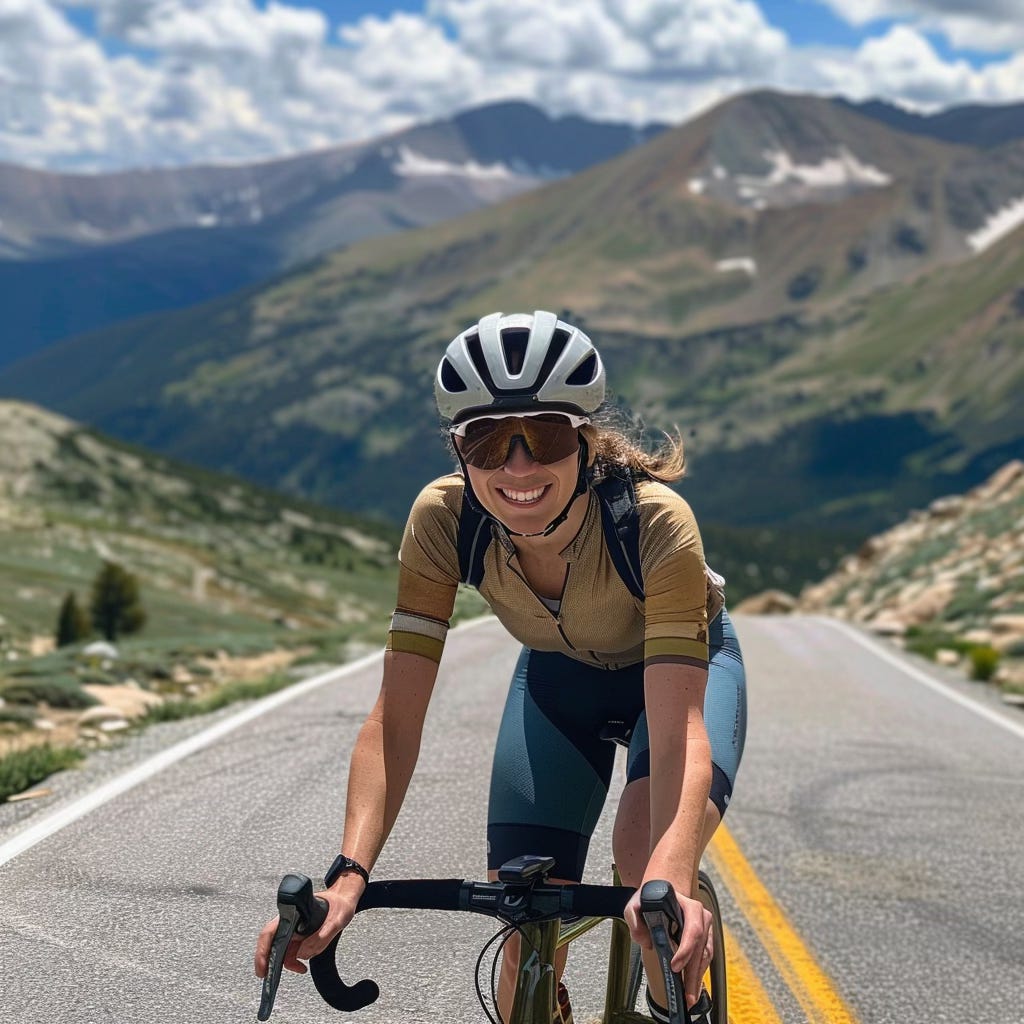Our next chapter is on Lactate Testing Essentials.
It’s quite “science-y” and to balance our protocol-based content, I want to share thoughts on what drives performance.
Let’s start with a quote from John:
When we practice listening to our body, rather than relying on the numbers provided by heart rate, lactate or power readings, we find that our confidence and enjoyment increases.
From: Using Subjective Perception, Training Zone Essentials
The words I want you to notice are:
Listening
Confidence
Enjoyment
Whatever our protocol, these words are an important part of what keeps us coming back for more.
When things go wrong, it is because we failed to listen to our lack of enjoyment.
Listening - Confidence - Enjoyment
No Stone Unturned
Along my elite journey, I left no stone unturned:
Wind Tunnels & Velodromes for Aero Testing
Lactate & MetCarts for Metabolic Testing
Coached By Three of The Big Four (Scott Molina, Dave Scott and Mark Allen)
Coaching Apprenticeship Under Joe Friel
Frequent Training Camps, with the top athletes of the day
It was a fun way to do a ton of work.
It was the work, not the data, that made me better.
As you read our chapters, remember => Work Drives Gains
Time is an excellent way to measure work.
Time on our feet.
Time on the bike.
Time in the water.
While we are spending our time…
Listening to senior athletes and coaches.
Building Confidence by putting in the reps.
Enjoying being part of our team.
Learning by doing.
…pay attention to what works, as well as what doesn’t work.
An Endurance Apprenticeship

Last week, I was watching an online debate about training zones. With our chapter fresh in my mind, I was tempted to chime in…
You know, this would become clearer if you did a lot more volume.
Understanding is easier when we learn by doing.
Ideally, a shared apprenticeship, where we learn from our team’s mistakes as well as our own.
20 years ago, my favorite reply was “JFT.”
It stood for Just Frickin’ Train.
Things have come a long way over the last two decades. While we were JFT’ing we would have benefited from applying the lessons of the next section.
…but there was a lot of truth in the JFT credo.
…and I’ve been reminded of it as I travel the path from Recreational To Top Amateur
(link is to Alan Couzens’ article on Leveling Up)
Learning From Mistakes
Stay focused on what drives performance.
Understand the volume requirements of the level you wish to attain. (See Alan’s linked article, it’s a useful starting point for multisporters.)
If you are biomechincally limited then use other sports to accelerate the ability to hit the volume targets.
Limit intensity, and racing, while building general capacity (defined as volume tolerance). Volume first.
Our zones chapter, and the lactate chapter (to come), are about helping you achieve the above. From that chapter…
Training zones help us Do Work so we Get Better.
As zealous JFTers… we got both correct.
We did a lot of work.
We got better.
Here’s what we missed
Be Patient - The endurance game is a long one.
Remember Roger Robinson.
If a world-class amateur can spend 5-10 YEARS getting back in shape. It’s going to take us a similar timeframe to reach our athletic peak.
Don’t Be A Nut - We have the time to do things correctly.
Our Tired Athlete section lays out Red Flags For Maladaptation.
Daily, I see maladaptation all around me.
Bone Stress Injuries.
Cold Sores.
Night Sweats.
Slow Healing.
Progress doesn’t need to be as difficult as many of us make it.
Loading Is The Easy Part
The loading protocols we share will help you stay on the right side of The Limit.
Use them to create your own system for consistent, positive adaptation.
Consistency As Protocol
Let’s pull this together.
Showing up drives performance.
If we’re showing up, and paying attention to errors, then we’re going to improve.
If we’re not improving then:
Do we need more work?
Do we need more patience?
Do we need better adaptation?
This is where a coach can play an important role.
Speaking from hard won experience…
Competitive athletes are hard workers by definition.
You are going to think the answer is always “more.”
Sometime it is… Volume is a Good Explanation.
Sometimes it is not… lacking confidence and reduced enjoyment are warning signs of maladaptation.
We underestimate the power of recovery.
Build stress-free days into every week.1
There is no one truth.
If you’re having fun, healthy and confident then keep it rolling.
If not then simplify, get back to enjoying yourself and remove maladaptive habits.
Consistency As Protocol.
Part of the reason I stopped competing was, with a young family, there were no “stress-free” days. My endocrine system felt constantly stressed. I realized competitive athletics was incompatible with the family life I wished to create. Over time, the kids grew up and I had capacity to recover from competitive training. For the amateur athlete, it is not all about “having the time to train.” It’s often about “having the space to recover.”





How does the CTL change for the aging athlete to be at the TOP veteran level as you see it? Great article both AC and yours!
Another great article. It must have been amazing to have trained alongside and to have been mentored by the individuals mentioned?